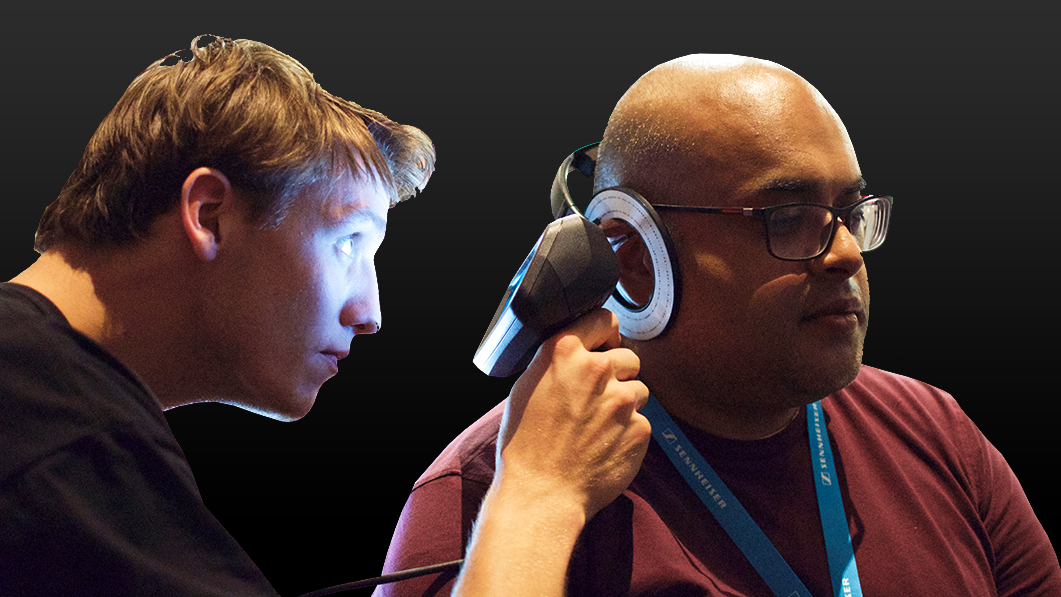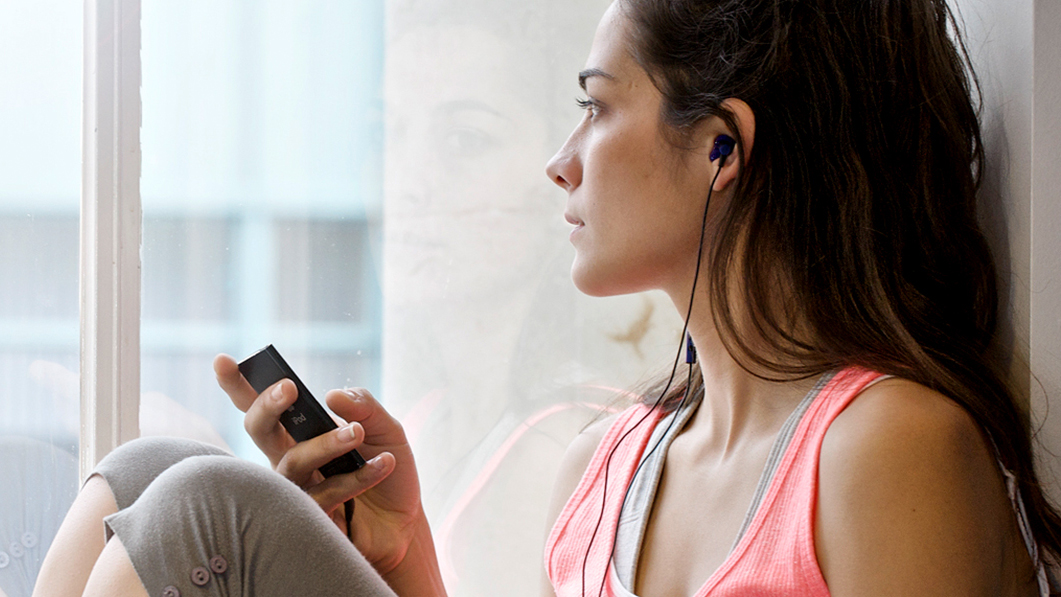3D scanning technology is helping to bring custom earphones to the masses
Custom tips

In-ear headphones can sometimes be a "love them or hate them" affair. There are those who love their compactness, and the way even non-noise cancelling pairs can offer a good amount of noise-isolation from the outside world, and there are others who can't stand having something in their ear canal.
But, if you talk long enough with in-ear headphone's detractors, the same issue always comes up: they just don't fit well.
Snugs is a company that's hoping to address that with its custom-made ear tips for less than the cost of the competition and can be made with almost no effort on your part.
The future of custom-fit buds
Before we dive into what Snugs is doing differently, I should mention that bespoke earphones are nothing new. Companies have been making earphones that perfectly match the shape of the inside of consumers' ears for years, but the cost of the process has meant that they've been limited to professional musicians and audiophile prosumers.
The difference with Snugs is the method by which they acquire a 3D impression of your ear. Traditional methods involve filling your ear with a modelling silicon which goes off in a matter of minutes. This mould would then be sent to a lab to be scanned, and a custom ear-tip produced.
Snugs CEO Paul Jobin explained how his process differs, "We scan you on the spot and [then] we can upload these files to the ether and we can model and print anywhere," essentially cutting out the middle-man of creating a mould that needs to be scanned separately.
What this involves is the use of a small handheld scanner, which has a metal probe that extends just over an inch into your ear.
Sign up for breaking news, reviews, opinion, top tech deals, and more.

Before my ears were scanned I was required to clean out my ears using a small cotton swab in order to remove any miscellaneous earwax (gross right?), and then one of the Snugs assistants spent a couple of minutes scanning each ear. The whole process took less than ten minutes.
We scan you on the spot and [then] we can upload these files to the ether and we can model and print anywhere.
The traditional way of making a mould takes far longer, and is much more invasive. "You [the person making the mould] have to be medically trained, it's invasive, I have to look inside your ear I have to ask you all sort of questions about your ear health, I can be compacting your wax."
In other words, there are a whole host of issues with the traditional method that means that you need make sure anyone carrying out the procedure is properly trained to a high standard.
That's not to say that the staff who performed my ear scans were unprofessional, but it's far easier to have them working out of retail stores rather than medical clinics.
Once the scan is performed you then pick which pair of earphones you want the tips to fit. Snugs says that they're compatible with 150 different styles of earphone, but since I tend to prefer over-ears rather than in-ears, I opted for a pair of Snugs' own-brand S10 in-ear headphones which retail for £199 (around $260 / AU$340 - including the ear-tips).
The benefits of going bespoke
Jobin claims that Snugs custom ear-tips offer a number of benefits to music listeners. Chief amongst them is comfort – these eartips can sit in your ear rather than having to be pushed far enough in for a rubber eartip to hold them in place.
I've created something that's made to fit you, and is comfortable for prolonged use because it's not jammed in your ear anymore."
This comfort is key, according to Jobin. "I've created something that's made to fit you, and is comfortable for prolonged use because it's not jammed in your ear anymore."
Also interestingly, Jobin claimed that as well as offering noise isolation of between 25 and 30dB, the tips would also improve the sound of your existing earphones. "Using a soft silicone tip and by creating that airtight fit will make a good earphone sound great, and a great earphone sound awesome."
Of course, I had to wait a couple of weeks for my custom pair of Snugs to arrive, and after hearing Jobin's bold claims about their benefits, I couldn't wait.
Finding the right fit
When they finally arrived, the earbuds came in a carrying case, with a small tube of what appeared to be lubricating anti-septic paste.
A key part of what makes the Snugs excellent at holding in your ears is the tackiness of the eartip silicone, but while this is excellent at stopping them from falling out, it can make it a little hard to get them in when they're fresh from the factory.
A quick session with the paste later and the first earbud was seated happily in my left ear, but the right proved harder to fit. In its instruction manual, Snugs says that it can be difficult to fit the headphones at first, but try as I might I just couldn't get the right ear-tip to sit properly.

Eventually I got it to a position that meant that it wouldn't fall out of my ear, but I'd be lying if I said it felt comfortable. It felt as though it was a fraction of a millimeter too big or too deep, and every subsequent time I've worn the earphones, I've not found the right earbud to be comfortable over the course of my listening sessions.
As for the sound quality itself, it's difficult to establish whether the ear-tips improve the quality of the headphone's sound. After all these Snugs-branded headphones are the only ones that I've only ever used with the custom ear-tips.
They do offer a decent level of noise isolation, however.
My advice would be that if you're going to buy a pair of Snugs eartips I'd recommend finding a pair of in-ear earphones that you enjoy listening to first, and then have the ear-tips made to fit them.
Conclusion: A cautionary in-ear tale
I used the Snugs custom earphones on and off for a month or so before setting them aside.
It might be the case that I'm not the intended market for Snugs. After all, I'm not someone who enjoys listening to music using in-ear headphones.
But I was hoping that the Snugs would change my attitude towards earbuds. I was hoping that they'd feel more comfortable, wouldn't slip out as easily, and if they offered improved sound quality in the process then I'd be happily surprised.
But while I found that one ear-tip fit comfortably and snugly, the other has never felt right in my ear, and I found it too uncomfortable to use.
Snugs do advertise a no-quibble returns policy on its site for anyone dissatisfied with the quality of their ear-tips, so you're protected if you find that your ear-tips don't fit for any reason, but it would have been nice if they'd fit first time.
Ultimately the experience has shown me that Snugs is very capable of producing a well-fitted ear-tip because I have one that does just that. It's just a shame that I don't have one that fits in my right.
So proceed with caution, prospective custom earphone buyers. Snugs – and for that matter any custom-fitting headphones – can be great, but my experience was ultimately an inconsistent one.
- Need a pair of headphones? We've got a list of the best in-ear headphones available.

Jon Porter is the ex-Home Technology Writer for TechRadar. He has also previously written for Practical Photoshop, Trusted Reviews, Inside Higher Ed, Al Bawaba, Gizmodo UK, Genetic Literacy Project, Via Satellite, Real Homes and Plant Services Magazine, and you can now find him writing for The Verge.